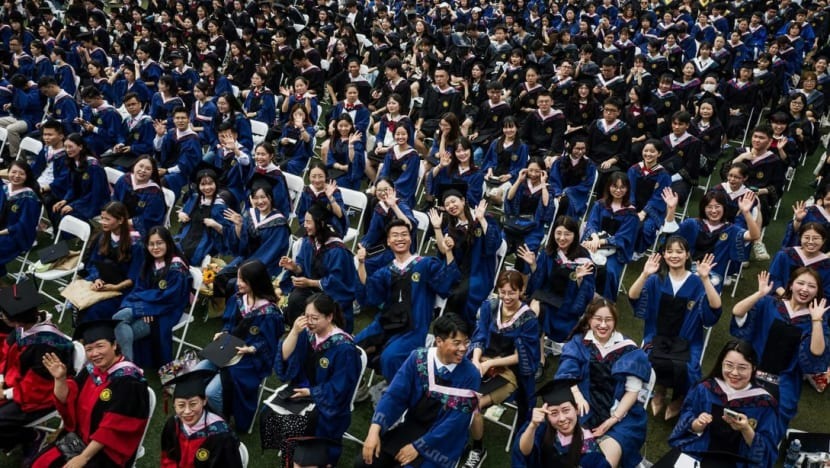‘Unsolvable’? China’s record youth unemployment situation will only get worse, say experts
21 June, 2023

China’s youth unemployment rate hit a new high in May and is expected to rise further in July and August as 11.58 million university graduates pressure the job market
It is the most difficult time for China’s youth employment since the ‘reform and opening up’ in 1978, according to Peking University professor Lu Feng
Young jobseekers in China are faced with the country’s most difficult employment market in generations and they need to brace themselves for tougher times ahead as the struggles will not disappear in the short term, with the worst yet to come, economists said.
The jobless rate for the 16 to 24 age group has gradually climbed since 2020 and hit new highs over the past two months, posing a challenge to Beijing’s post-coronavirus recovery efforts. And judging from seasonal trends, the youth unemployment rate is expected to rise further in July and August, with a record 11.58 million university graduates set to leave campus.
“China is at the most difficult time for youth employment since the ‘reform and opening up’ in 1978,” said Lu Feng, director of Peking University’s China Macroeconomic Research Centre.
“The problems won’t just disappear in the short term, but will remain unsolvable for a while,” he added during an interview with the Economic Observer newspaper last week.
In May, the jobless rate for the 16 to 24 age group hit a record of 20.8 per cent, up from the previous high of 20.4 per cent in April. The overall urban surveyed jobless rate, however, remained unchanged from April at 5.2 per cent last month.
Despite the record figure, National Bureau of Statistics spokesman Fu Linghui claimed last week that “some people have been misunderstanding the overall volume of our numbers”.
He noted that only 33 million of the 96 million people in the 16 to 24 age group are currently in a position to be employed, as many are students. And among those 33 million, he said, around a fifth have been unable to find work.
Youth unemployment rates have been high since 2020, and have not dropped below 14 per cent since May 2021.
Lu believes that it would take at least two or three years for the youth unemployment rate to drop to a balanced state as the high number of college graduates only adds to the employment pressure already compounded by the lacklustre economic recovery.
China has previously undergone four significant waves of job crises since the late paramount leader Deng Xiaoping started economic reforms and opening-up in 1978, Peking University professor Lu said.
The first crisis occurred in early 1980 when around 5 million educated youth, who were previously sent to the countryside, returned to their home cities. The pressure led to a series of reforms, particularly Beijing lifting restrictions to allow self-employed businesses.
The second happened between 1989 to 1990, when the country’s economic growth slowed.
Beijing’s determination to restructure low-efficient and loss-making state firms in 1998 led to the lay-off of millions of workers. The generation in their 40s and 50s was primarily affected by the third crisis, but the surplus labour was gradually taken in by China’s booming private sector following its entry into the World Trade Organization in 2001.
After 15 million to 20 million migrant workers left coastal factories due to a lack of work during the 2008 global financial crisis, Beijing quickly implemented a 4 trillion yuan (US$559 billion) stimulus package to support the job market amid its fourth crisis and lift economic growth.
“The lacklustre economic rebound this year has resulted in a lack of confidence in labour demand, particularly among small- and medium-sized enterprises, and businesses prefer to increase employee overtime rather than swiftly adding new positions,” Lu said.
In addition, those who were unemployed or stayed in transitional jobs during the coronavirus pandemic would re-enter the job market, further intensifying the competition, he added.
The number of recently graduated jobseekers who remain unemployed could exceed millions, according to media reports.
Lu noted that it is necessary to place greater emphasis on timely and appropriate “countercyclical adjustments” and raise the confidence level in the private sector by addressing their concerns.
The private sector, which employs more than 80 per cent of the urban workforce, suffered from slowing economic activities last month, pointing to weak confidence and slowing momentum.
“Any measures that help youth employment would be good. Certainly, (government) policies should respect the preferences and appeals of young people,” Lu added.
The government should also minimise policy impact to ensure government supervision is transparent, Lu said, adding that the regulatory crackdowns in private tutoring, real estate and internet sectors severely affected the employment situation of young people.
State-owned companies and the public sectors should also continue to expand hiring, as a transitory solution, he added.
Larry Hu, chief China economist at Macquarie Group, said in a report last week that the persistently high youth unemployment points to a self-fulfilling confidence problem.
“Corporates are reluctant to hire because of soft consumer demand, while consumers are reluctant to spend because of the weak labour market,” Hu said.
Source: www.channelnewsasia.com
